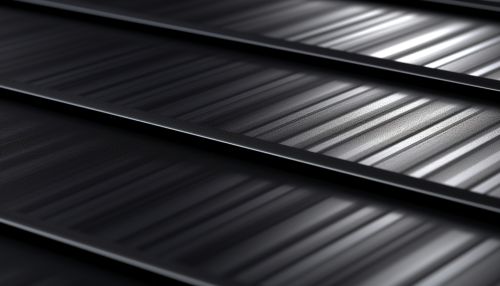Monocrystalline solar cell
Introduction
Monocrystalline solar cells, also known as single-crystal cells, are a type of photovoltaic cell used in solar panels. They are known for their high efficiency and sleek, uniform appearance. These cells are made from a single crystal structure, which allows the electrons that generate a flow of electricity to move more freely. This results in a higher efficiency rate than other types of solar cells.


History and Development
The development of monocrystalline solar cells began in the mid-20th century. The first practical photovoltaic cell was developed in 1954 by Bell Laboratories, and it was made from a single crystal of silicon. Since then, the technology has been continuously improved and refined. Today, monocrystalline solar cells are one of the most efficient and reliable types of solar cells available.
Manufacturing Process
The manufacturing process of monocrystalline solar cells involves several steps. First, high-purity silicon is produced through the Czochralski method. This involves melting a small piece of silicon in a crucible and slowly pulling a single crystal silicon seed out of the melt. The resulting monocrystalline silicon ingot is then cut into thin wafers, which are processed into solar cells.
Structure and Composition
Monocrystalline solar cells are composed of a single crystal lattice of silicon. The uniformity of the crystal structure allows for a free and unimpeded flow of electrons when the cell is exposed to sunlight. This results in a higher efficiency rate compared to other types of solar cells, such as polycrystalline or thin-film solar cells, which have a more fragmented crystal structure.
Performance and Efficiency
Monocrystalline solar cells are known for their high efficiency. They typically have an efficiency rate of around 20%, although some high-end models can reach efficiencies of over 22%. This high efficiency is due to the uniform crystal structure of the cells, which allows for a more efficient flow of electrons. However, the performance of monocrystalline solar cells can be affected by temperature and light intensity.
Advantages and Disadvantages
There are several advantages to using monocrystalline solar cells. They have a high efficiency rate, which means they can generate more electricity per square foot than other types of solar cells. They also have a long lifespan, typically around 25 years or more. However, monocrystalline solar cells are also more expensive to produce than other types of solar cells, which can make them less cost-effective in some cases.
Applications
Monocrystalline solar cells are used in a variety of applications. They are commonly used in solar panels for homes and businesses, as well as in large-scale solar power plants. They are also used in some types of solar-powered devices, such as solar calculators and solar watches.
Future Developments
Research is ongoing to improve the efficiency and reduce the cost of monocrystalline solar cells. One area of research is focused on developing new manufacturing processes that can produce high-quality monocrystalline silicon at a lower cost. Another area of research is focused on improving the design of the cells to increase their efficiency.
